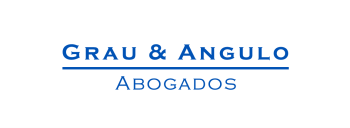On January 9 2018 Barcelona Commercial Court Number 5 upheld the patent infringement action filed by Société des Produits Nestlé against Fast Eurocafé, SA on the basis of European Patent (EP) 1.472.156/Spanish Patent 2.260.626 (the '156 patent) and EP 1.808.382/Spanish Patent 2.407.963 (the '382 patent).
Nestlé is the holder of the '156 and '382 patents, which protect the capsules of the well-known Nescafé Dolce Gusto system.
Since May 2015 Fast Eurocafé has imported, offered and sold capsules for a beverage compatible with the Nescafé Dolce Gusto system.
In January 2016 Nestlé filed a patent infringement action with a preliminary injunction motion against Fast Eurocafé based on the abovementioned patents. At that time, two different versions of the capsules had been launched in the market by Fast Eurocafé:
- V1 capsules, which opened in the middle; and
- V2 capsules, which opened at the edges (ie, V-shaped openings) and, in some cases, reproduced the same openings found on V1 capsules (ie, through holes).
Nestlé's main argument was that both the V1 and V2 capsules infringed the '156 and '382 patents, which protect:
"a capsule designed to be extracted by injection of a fluid under pressure in an extraction device, containing a substance for the preparation of a beverage, comprising a closed chamber containing the said substance and a means allowing he said capsule to be opened at the time of its use and for allowing the said beverage to flow out characterized in that opening is achieved by a relative engagement of the opening means with a retaining wall of the closed chamber and in that the relative engagement is performed under the effect of the rise in pressure of the fluid in the chamber."(1)
Fast Eurocafé opposed the appeal, arguing that:
- Nestlé's patents were invalid (on the basis of lack of novelty and lack of inventive step) and had not been infringed due to the fact that:
- the V-shaped openings of the V2 capsules had no tearing or puncturing, but only detached the retaining wall from the cup; and
- there was no significant beverage outflow through the holes present in approximately 20% of the V2 capsules; and
- there was no defence regarding the V1 capsules, which had not been in the market when the complaint was filed.
In its defence, Fast Eurocafé interpreted the scope of protection of Claim 1 in both patents restrictively, holding that:
- while Claim 1 of the '156 patent made no reference to the fact that 'opening' meant having to tear or puncture the thin film of the closed chamber, the claim should be interpreted as if this feature had been included; and
- with regard to Claim 1 of the '382 patent, which included the tearing feature, the term should be interpreted restrictively.
In its January 9 2018 decision, Barcelona Commercial Court Number 5 declared that claims must be interpreted according to their descriptions. Therefore:
- considering that Claim 1 of the '156 patent had not included the feature of opening by means of tearing or puncturing and the description explained that the means of opening can have any shape or mechanism (several were mentioned), Fast Eurocafé's interpretation made no sense; and
- although Claim 1 of the '382 patent included the tearing feature and considering that its description expressly stated that the word 'tearing' must be interpreted broadly, Fast Eurocafé's interpretation was unjustified.
Having determined the scope of protection of both patents, the court declared them valid. With regard to their infringement, after an extensive analysis of both parties' evidence, the court concluded that:
- despite the fact that the V-shaped openings of the V2 capsules involved no tearing or puncturing and accepting (as Fast Eurocafé defended), but only a mere separation or detachment of the thin film, such means of opening the capsules fell within the scope of protection of Nestlé's patents (ie, without tearing or puncturing, it opened the capsule so that the beverage flowed out and prevented cross-contamination);
- the through holes also fell within the scope of protection of both patents because an opening or the breakage or puncturing of the thin film (while minimal) permitted beverage outflow; and
- as no evidence was filed to defend the non-infringement of the patents, the arguments relating to the V1 capsules were accepted as applying to the V2 capsules.
The decision has been appealed.
This article was first published by the International Law Office, a premium online legal update service for major companies and law firms worldwide. Register for a free subscription.
For further information on this topic please contact Ana-Laura Morales at Grau & Angulo by telephone (+34 93 202 34 56) or email ([email protected]).The Grau & Angulo website can be accessed at www.ga-ip.com.
Endnotes
(1) Extract from the '156 patent – the '382 patent is worded similarly.



